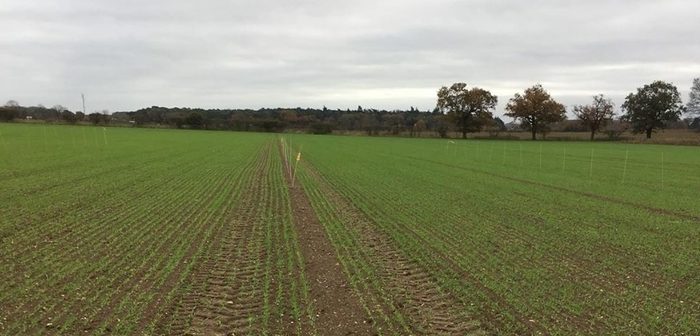Recent trial results measuring the effect of various inputs on crop health, nutrition, take-all incidence and severity, have shed light on how to manage the often-overlooked disease in winter barley.
Elle Pace, agronomist at Hutchinsons, ran the trial as part of her BASIS project, which consisted of 20 field plots, in soils following a first wheat where the presence of take-all is often higher.
“Although there was no take-all detected, the inputs demonstrated various other indirect beneficial results relating to the severity of take-all, including the ability of the plant to tiller, green leaf area, green index area and root development,” she explains.
“In a take-all situation, an increased number of tillers could compensate for the loss of root area caused by the disease, as the increased foliage above the surface increases photosynthesis.”
The project compared the impact of single purpose seed dressing (SPD) and insecticide (prothioconazole and clothianidin), versus specialist take-all seed treatment Latitude (silthiofam) and prothioconazole.
The plot treated with just the silthiofam and prothioconazole, with no other inputs, showed a yield response of 0.73 t/ha.
“Take-all can affect both yield and grain quality in barley by reducing bushel weight and causing spikey grains. Therefore, controlling the disease is particularly vital in malting barley where grain quality is important to meet end market requirements,” adds Elle.
Tim Eaton, Key Account Manager at Certis, explains that the important lesson from this research is that any take-all control programme should be fully integrated and carefully planned.
“It’s important to ensure that the crop is robust enough to deal with the take-all, so making every provision ahead of the season is vital,” he says.
“Ensuring seed rates are high enough to compensate for potential germination losses, and adequate amounts of Nitrogen are applied to help develop robust rooting, can all help to reduce the severity of take-all in winter barley,” says Mr Eaton.
“Elle’s results show a yield response of 0.73 t/ha for the plots using specialist seed treatment, Latitude, with no other inputs. This equates to a cost benefit of £79/ha when assuming a feed barley value of £145/t.
“Hopefully this research will highlight the incidence of take-all in barley as a second cereal, and the importance of implementing an integrated strategy that incorporates a number of tools in the armoury,” he says.




